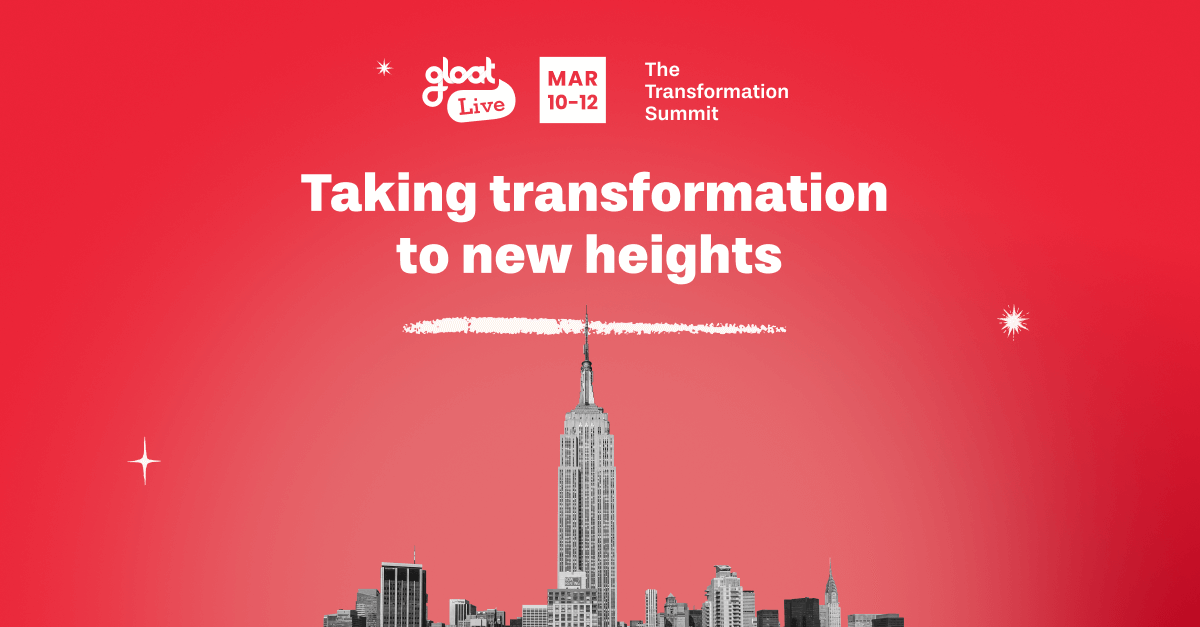What a pixelated workforce means for your business
How pioneering enterprises are restructuring work to unlock agility

The Great Resignation isn’t the only news that’s taking the working world by storm. As the employee-employer relationship evolves, the way businesses are structured is also taking on a new shape. Namely, they’re getting “unboxed”. And the change is happening fast, with GE, Johnson & Johnson, and IBM all announcing plans to break up their businesses in recent months.
This news doesn’t just make for interesting headlines; it also tells us that we’re approaching a significant milestone in our next chapter: the pixelation of work. Yesterday’s massive corporations are restructuring into smaller, flatter organizations, all while traditional jobs are being deconstructed into projects, gigs, and tasks.
These aren’t minor changes. In fact, pixelation will touch every element of the way we work, from how businesses hire to how talent is developed and retained. So what does pixelation really mean for the future of work? And how can leaders recalibrate their strategies accordingly?
What is the pixelation of work?
If the term “pixelated workforce” sounds a little unfamiliar, you’re not alone. It’s only recently that future of work experts and HR analysts like Josh Bersin landed on a name for what has been building under the surface for quite some time.
The term gets its name from pixels, the smallest unit of a digital image that can be displayed. Much like graphics can be broken down into pixels, each workforce can be deconstructed into smaller pieces, whether that’s sub-divisions, teams, employees, or even individualized projects and tasks.
Pixelation is the acting force behind one of the future of work’s hottest topics, the gig economy. Once work is divided into tasks, it’s very easy for freelancers and independent contractors to get involved. Similarly, the pixelated workforce lends itself to an internal gig economy, in which employees are empowered to pick up projects across their organization and break out of the confines of traditional jobs.
Why is pixelation becoming so popular now?
As recent headlines illustrate, pixelation is quickly going mainstream. Leading enterprises are rapidly restructuring and breaking themselves down into smaller parts. But why?
One of pixelation’s greatest selling points is that it facilitates greater agility. By reducing the organizational silos that typically weigh down response times, businesses can suddenly move faster and make decisions more efficiently. And in the aftermath of COVID-19, leaders recognize that agility is the ultimate advantage. So it only makes sense that organizations will want to restructure in new and dynamic ways.
Pixelation is also a smart move during the Great Resignation. As the turnover tsunami stretches on, most organizations are struggling to access the talent they need to execute business priorities. Deconstructing jobs into gigs and projects makes it easier to find internal candidates who can accomplish key tasks. As an added benefit, the taskifcation of work also leads to ample experiential learning opportunities. When employees take on a new project—possibly cross-functional, or one that requires skills they don’t normally flex in their daily job—, they gain abilities that will enable them to grow and advance their careers.
The benefits of the pixelated workforce
If you’re weighing the pros and cons of taking a more pixelized approach to your organization’s structure, here are a few benefits you can’t overlook.
Increased agility
When you break down corporations into nimble companies and jobs into projects, it gets easier to move faster. Flatter hierarchies streamline the decision-making process, while the taskification of work enables leaders to reallocate talent to meet evolving priorities as they emerge.
Breaking down silos
Your business will never achieve its full potential if silos is weighing it down. At larger companies, it’s almost impossible for every manager to have a full picture of the skills and capabilities within their organization. But in the pixelated workforce, leaders can see who has the competencies and capacity they need to carry out crucial tasks.
Improved retention
A lack of growth opportunities is the second most common factor that causes employees to look for new jobs, as our research demonstrates. But what can you do to increase access to opportunity, and in turn improve retention? Pixelating your workforce is a game-changer, as it creates greater visibility into existing opportunities within your organization so that employees are empowered to take on new challenges.
Upgraded skill-building
Most leaders understand the importance of developing new competencies. A pixelated workforce has several unique advantages when it comes to building skills. Unboxing work creates more opportunities for employees to get involved in hands-on learning experiences such as projects and gigs, enabling them to develop the real-world knowledge they need to deepen their expertise.
Workforce Agility Platforms and the Pixelated Workforce
While visionary organizations are quickly becoming more pixelized, plenty of businesses continue to rely on traditional job architectures as the basis for structuring their workforce. Some may not recognize the benefits of unboxing work just yet, while others might not know how to turn their vision into a reality. So what does it take to activate the pixelated workforce?
Pixelization starts by creating an environment where workforce insight and action can function together harmoniously — by first understanding the talent and skills within an organization, HR leaders can in turn restructure their people to make way for new work methodologies. This is where Workforce Agility Platforms come into play. These systems perform by offering talent opportunities to move and organize fluidly, and at the same time are able to capture valuable information on employee capabilities, interests, and talent supply and demand that can be used for HR decision making. The technology matches employees to projects, gigs, and mentorships based on their skills, ambitions, and capacity, while also centralizing and harmonizing workforce intelligence. In short, they piece together the pixels in your workforce in a way that makes sense for both your business and your people.
Workforce Agility Platforms can also address one of the pixelated workforce’s most common challenges: a change in the manager-direct report relationship. When work is unboxed from jobs, employees might take on projects that are managed by different team leaders. In the past, that often caused some managers to feel possessive of their direct reports and potentially resistant to pixelation. However, these systems broaden managers’ talent pools by matching qualified employees to projects they have open. As a result, managers can feel confident that they’ll always have the talent they need to execute their priorities, in turn empowering their reports to expand their horizons.
As we enter the new world of work and the pace of change keeps accelerating, more organizations will look to pixelation as a means to achieve greater agility and outpace the competition. If you want to learn more about what it takes to unbox work and create your internal gig economy, take a look at Schneider Electric’s case study.




